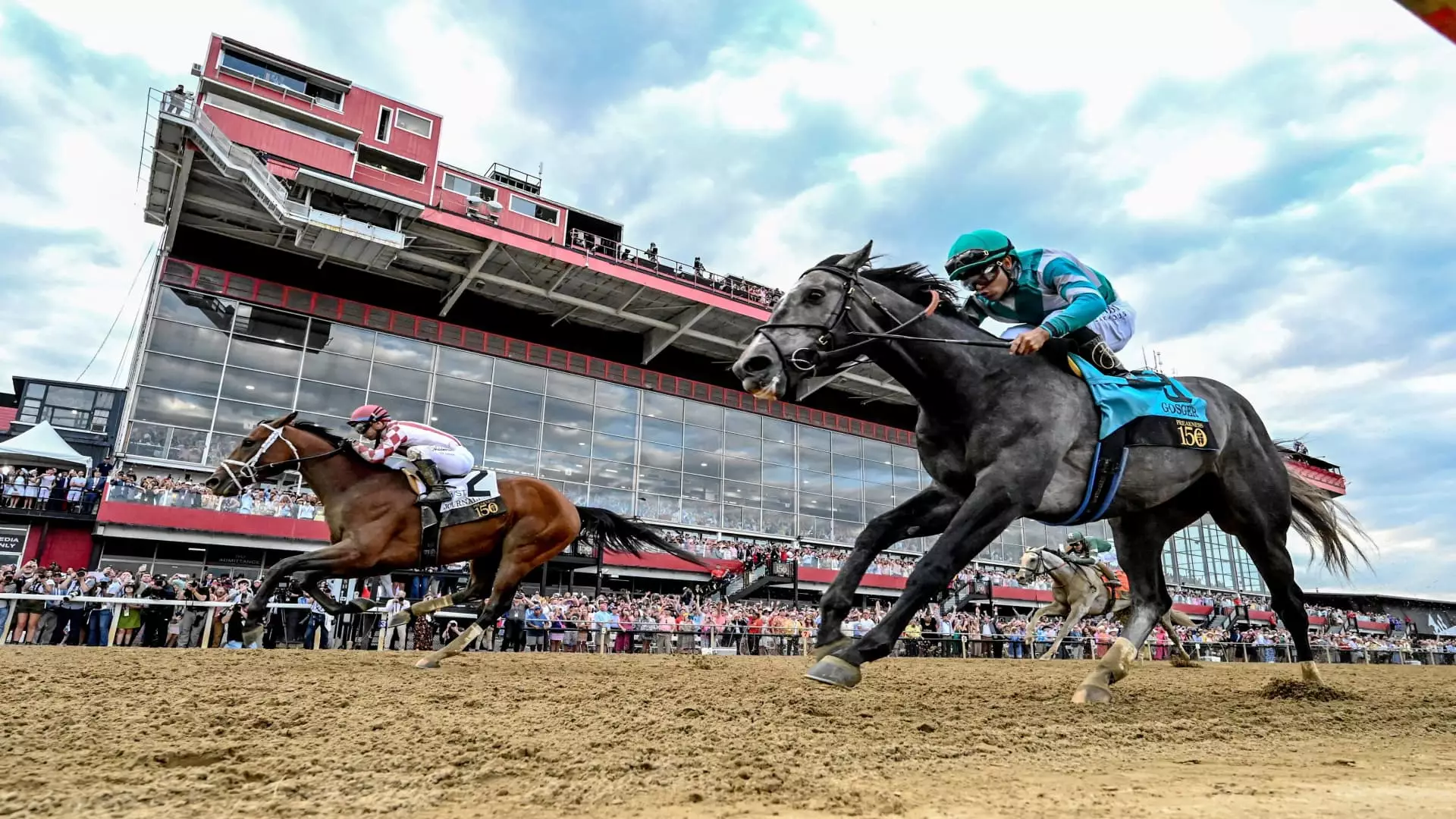Horse racing stands as one of the most exhilarating yet punishing sports, challenging its participants to plumb emotional depths few can fathom. It’s a whirlwind of hopes and dreams galloping at breakneck speeds, encapsulating victory and defeat in moments. Nowhere was this encapsulation more evident than during the recent Preakness Stakes, where the horse aptly named Journalism delivered a performance that sent ripples of excitement through the racing community. After finishing second in the previous Kentucky Derby and trailing five lengths in the Preakness, Journalism’s eventual comeback speaks volumes not just about the horse, but about everything that makes the sport electrifying.
Coming Back from the Brink
The Preakness Stakes unfolded as a nail-biting drama, with Journalism seemingly resigned to another letdown. As the horse traversed the final turns, it appeared as if Journalism was once again destined to play the role of runner-up, outclassed by a fleet-footed rival, Gosger. The tension was palpable; seasoned trainer Michael W. McCarthy openly voiced his fears of seeing his horse come up short again. “Great effort, just gonna come up a little bit short,” he remarked, perfectly summarizing the skepticism that hung in the air like a heavy fog. But the narrative was about to twist in dramatic fashion. With an intricate dance between the competing horses, Journalism somehow squeezed through a narrow opening in a moment that epitomized the sheer unpredictability of the sport.
The Role of Jockey and Trainer
A race’s success often hinges on not just the horse, but who is sitting in the saddle. Jockey Umberto Rispoli, who made history as the first Italian jockey to win a Triple Crown race, stepped up precisely in this moment of crisis. With steely determination, Rispoli pushed Journalism forward, navigating what seemed an impossible path. His dexterity, combined with the horse’s fatigue-masking resilience, paved the way for an unbelievable surge toward the finish line. McCarthy’s dual perspective as both trainer and overseer adds layers to this intricate dance. His experience and instinct play a key role in acknowledging when to invest hope and when to brace for disappointment.
The Shortcomings of the Triple Crown Format
While Journalism’s comeback lushly illustrates talent, it also highlights broader issues within the sport. The fact that Preakness was devoid of the Kentucky Derby winner speaks to a troubling trend in the Triple Crown narrative, where the tight scheduling often results in notable absences. Is the two-week interval between the Triple Crown races antiquated? The growing trend of Derby winners opting out of subsequent races prompts serious reflection on whether competing for the Crown has become more about popularity than sport. Moreover, the absence of such prominent contenders, like Sovereignty and discussions around rotating schedules for better competition, demands attention.
The Elements of Surprise
The beauty of horse racing lies in its unpredictability. With an experienced lineup of trainers, including the likes of Bob Baffert and D. Wayne Lukas, one would think the race would follow script. Yet Journalism proved that sometimes the most thrilling tales emerge when the odds seem stacked against you. The narrative transcends mere statistics—it evolves into a living testament to hope and ambition. The electric atmosphere of the installment speaks to what makes competitive sports resonant. It’s about creating legends, about moments that etch themselves into collective memory. On one hand, you have the bitter losses that weigh heavily on the soul; on the other, the triumphs that defy expectation and rewrite standing stories.
Celebrating the Triumphs, Acknowledging the Challenges
With Journalism’s victory, co-owner Aron Wellman aptly emphasized the understated but all-important roles of jockey and trainer alongside the horse. “Our jockey is a champion. Our trainer is a champion,” he celebrated, encapsulating the interconnectedness of success in horse racing. It goes beyond individual glory; it embodies a communal spirit, enriched by teamwork and dedication. Yet let’s not forget the challenges racing faces in providing consistent spectacles worth cheering for. The sport must evolve if it wishes to remain relevant, to energize fans, and to lure back those overflooded with skepticism. The Preakness this year was a thrilling story of resilience, but it also serves as a clarion call: let’s not rest solely on promising comebacks while neglecting to address the broader context of this captivating sport.

Leave a Reply